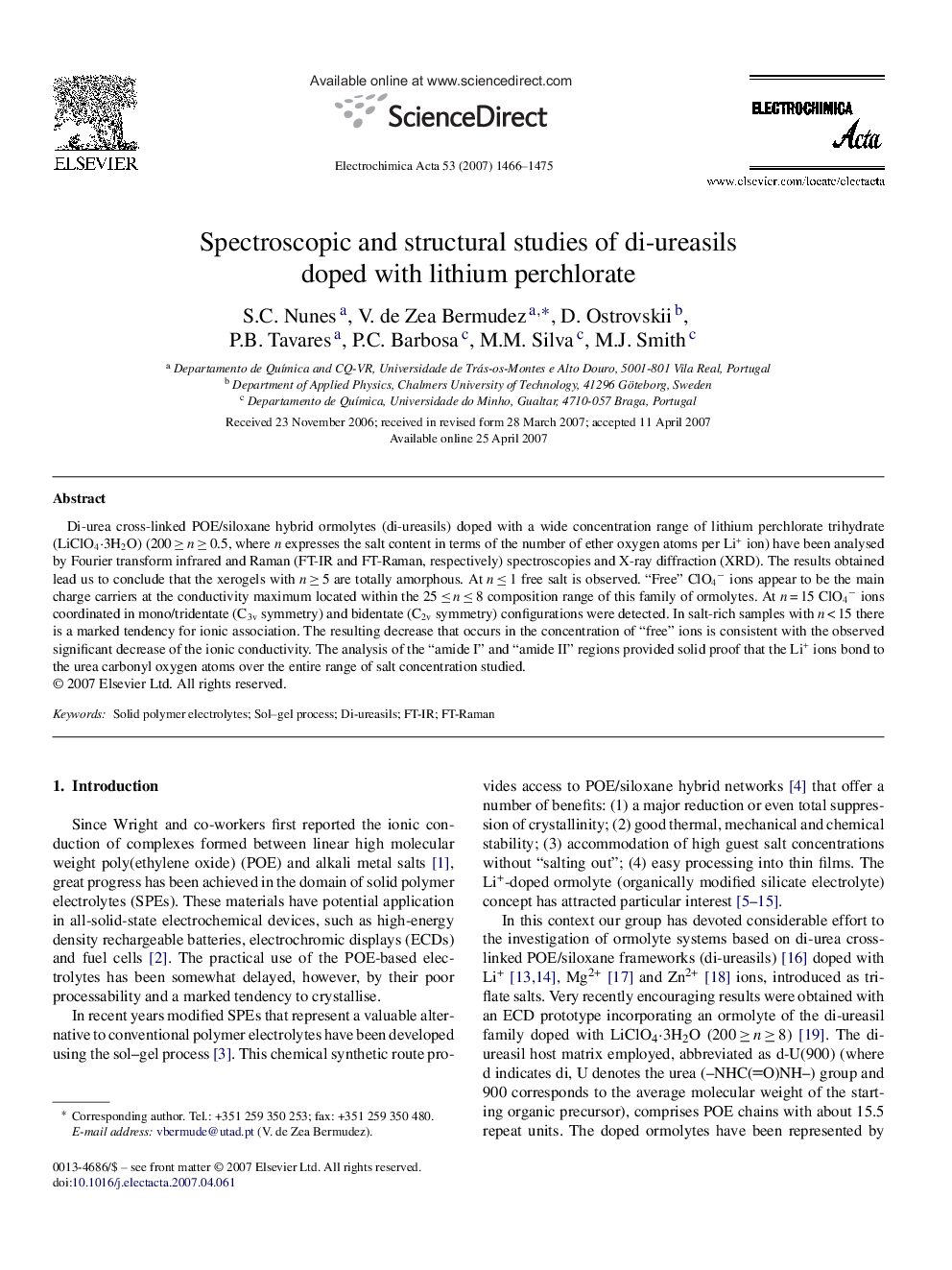| Article ID | Journal | Published Year | Pages | File Type |
|---|---|---|---|---|
| 193673 | Electrochimica Acta | 2007 | 10 Pages |
Di-urea cross-linked POE/siloxane hybrid ormolytes (di-ureasils) doped with a wide concentration range of lithium perchlorate trihydrate (LiClO4·3H2O) (200 ≥ n ≥ 0.5, where n expresses the salt content in terms of the number of ether oxygen atoms per Li+ ion) have been analysed by Fourier transform infrared and Raman (FT-IR and FT-Raman, respectively) spectroscopies and X-ray diffraction (XRD). The results obtained lead us to conclude that the xerogels with n ≥ 5 are totally amorphous. At n ≤ 1 free salt is observed. “Free” ClO4− ions appear to be the main charge carriers at the conductivity maximum located within the 25 ≤ n ≤ 8 composition range of this family of ormolytes. At n = 15 ClO4− ions coordinated in mono/tridentate (C3v symmetry) and bidentate (C2v symmetry) configurations were detected. In salt-rich samples with n < 15 there is a marked tendency for ionic association. The resulting decrease that occurs in the concentration of “free” ions is consistent with the observed significant decrease of the ionic conductivity. The analysis of the “amide I” and “amide II” regions provided solid proof that the Li+ ions bond to the urea carbonyl oxygen atoms over the entire range of salt concentration studied.
